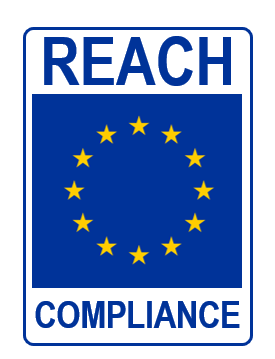EU REACH
October 17, 2018 | Written by GreenSoft Technology, Inc.
Application of the EU REACH Regulation to Glass
SVHCs present in glass or ceramic frit are generally exempt from EU REACH communication obligations

Under the EU REACH regulation, manufacturers may be permitted to apply certain exemptions to substance restrictions for certain specific substances and applications. Substances incorporated into ceramic or glass frit is one such application that has been exempted from Annex V article 7 of the REACH regulation by the European Commission.
Annex V of the REACH regulation addresses the obligation to register and communicate the presence of a Substance of Very High Concern (SVHC) within a product or article. Under the REACH regulation, glass is considered as a UVCB substance (substance of unknown or variable composition, complex reaction products or biological materials).
While SVHCs are commonly used to produce glass, the SVHCs are chemically transformed into the glass substance during the melting process. The glass substance is subsequently processed into articles. In these cases, the SVHCs are completely transformed and not present as such in the final glass-containing article.
Consequently, there is no obligation to notify or to communicate information down the supply chain under EU REACH. This was confirmed in a document released by the European Chemicals Agency (ECHA) in 2016.
More information about the nature and composition of glass and how the EU REACH regulation applies to glass can be found on the European Glass Alliance website.
With the addition of lead to the SVHC Candidate list on 27 June 2018, and the common use of lead in glass frit in EU RoHS compliant components (under EU RoHS exemption 7c-I), there has been some confusion in the industry about whether these applications are subject to EU REACH communication obligations. They are not.
Keep in mind that the application of the EU RoHS 7c-1 exemption does not automatically exempt the producer from requirements to communicate the presence of lead as an SVHC under the REACH regulation. If the part has any other applications of lead outside of the glass application, these other applications of lead would need to be evaluated for potential communication and notification obligations.
For example, the part could claim 7c1 (lead in glass) and 7a (lead in high melting point solder). In that case, the lead in the solder would still need to be considered.
GreenSoft Can Help Ensure Your Company is in Compliance with REACH
GreenSoft helps companies manage REACH compliance with a process that includes data collection, data validation, and report generation. We can also help with sourcing replacement parts for non-compliance parts, or recommending replacement suppliers for non-compliant or non-responsive suppliers. Learn more about our REACH compliance services here or get started with a FREE Risk Analysis/BOM Scrub.

